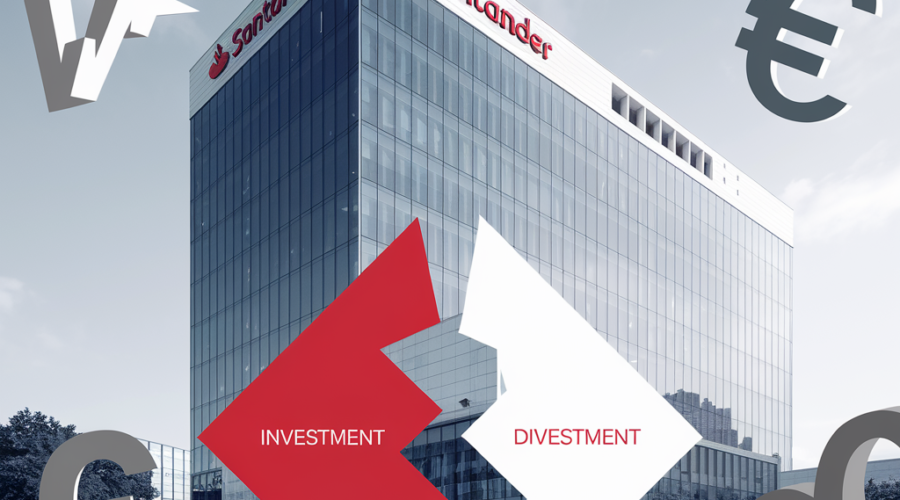Banco Santander (SAN), the eurozone’s largest bank by market value, stands at a pivotal juncture as it explores strategic options for its 62.2% stake in Santander Bank Polska. Valued at approximately $8 billion[1][3][7], this potential divestment comes amid shifting global banking dynamics and Santander’s broader strategic realignment toward growth markets like the United States. The move follows a 6.9% surge in Santander Bank Polska’s share price and a 5% gain for the parent company’s stock on news of the review[1][5], signaling investor approval of potential portfolio optimization. This analysis examines the financial, strategic, and market implications of this developing situation through the lens of corporate strategy and capital allocation priorities.
Strategic Rationale Behind the Polish Stake Review
Portfolio Optimization in a Shifting Banking Landscape
Santander’s deliberation over its Polish subsidiary reflects a calculated response to evolving market conditions. The bank’s 62.2% stake in Santander Bank Polska represents 5.8% of group-wide profits[1][3], yet senior executives have identified limited cross-business synergies with other geographic operations[1][3]. This assessment comes as Santander accelerates its $1.3 billion investment in U.S. corporate and investment banking capabilities[1], while simultaneously conducting a strategic review of its UK operations[3]. The Polish unit’s current valuation at 1.53x book value[1][3], down from 1.8x before recent market volatility, creates a potential window for value realization through partial or full divestment.
Capital Reallocation Priorities
The potential transaction aligns with Santander’s capital efficiency strategy, which has seen the bank maintain a 15.9% return on tangible equity (ROTE) in H1 2024[2]. Proceeds from a stake sale could bolster the bank’s capacity to fund its digital banking initiative Openbank and expand in higher-growth markets. Notably, Santander’s U.S. operations have shown 20% annualized growth in corporate banking revenue[1], contrasting with the Polish unit’s mature market profile. This geographic rebalancing mirrors industry trends where European banks are optimizing regional exposure amid divergent economic growth trajectories.
Financial Profile of the Polish Subsidiary
Performance Metrics and Valuation Dynamics
Santander Bank Polska demonstrated resilient performance in 2024, with net profit increasing 18.8% to €800 million[1][3]. The subsidiary’s Q4 results highlighted a 9% year-on-year earnings growth to €158 million, driven by loan income expansion that offset rising foreign currency mortgage costs[1][3]. Despite these fundamentals, the unit’s price-to-book ratio has compressed to 1.53x from 1.8x prior to recent market turbulence[1][3], creating a potential valuation disconnect that Santander appears keen to address. At current levels, the stake’s €7.3 billion valuation represents 8% of Santander’s total market capitalization[5], underscoring its materiality to the group’s balance sheet.
Comparative Market Positioning
The Polish banking sector’s average price-to-book ratio of 1.2x[5] suggests Santander’s subsidiary trades at a premium, likely reflecting its strong market share and digital banking capabilities. However, this premium has narrowed from 50 basis points to 33 basis points since September 2024[1][5], potentially influencing the timing of Santander’s strategic review. The parent company’s own valuation metrics—trading at 0.8x tangible book value versus the European sector average of 0.9x[8]—create additional pressure to optimize capital allocation across its geographic portfolio.
Market Reaction and Strategic Implications
Investor Response to Divestment Signals
The market’s enthusiastic response to the stake review—with Santander’s shares rising 5% and its Polish subsidiary gaining 6.9%[1][5]—reflects investor confidence in management’s capital allocation strategy. This reaction aligns with Santander’s historical share price performance, which has delivered 66% total returns since 2022 through disciplined capital management[2]. Analysts estimate that divesting the Polish stake could boost Santander’s CET1 ratio by 40-50 basis points[2], enhancing financial flexibility for strategic investments or shareholder returns.
Broader Strategic Recalibration
Santander’s Polish stake evaluation forms part of a comprehensive portfolio review that includes potential adjustments to its UK operations[3] and increased focus on Americas growth. The bank’s U.S. expansion strategy has already yielded results, with corporate banking revenue growing at a 20% compound annual rate since 2022[1]. This geographic reweighting responds to structural shifts in banking profitability, where U.S. operations typically generate ROEs exceeding 15% compared to Europe’s 8-10% average[2].
Industry Context and Execution Considerations
European Banking Sector M&A Trends
The potential transaction occurs amid heightened M&A activity in European banking, with 2024 seeing $46 billion in deals according to Dealogic data. Recent comparable transactions include UniCredit’s €1.3 billion acquisition of Alpha Bank Romania and ING’s divestment of its Austrian retail portfolio. Santander’s own track record includes the successful integration of Banco Popular in 2017 and the 2023 sale of its Swiss private banking unit, demonstrating strategic flexibility in portfolio management.
Execution Challenges and Stakeholder Considerations
Any divestment would need to navigate complex regulatory approvals from both Polish and EU authorities, given Santander Bank Polska’s systemic importance in Central Europe. Potential buyers could include regional financial institutions like PKO Bank Polski or international players seeking Central European exposure. The 2024 sale of a 5.2% stake in the Polish unit for €575 million[1][5] established a precedent for partial selldowns, which may appeal to Santander given current market conditions.
Conclusion: Strategic Flexibility in Uncertain Times
Santander’s evaluation of its Polish stake exemplifies proactive capital management in an era of economic uncertainty and divergent regional growth prospects. While the final decision remains pending, the bank’s ability to monetize non-core assets at favorable valuations could strengthen its competitive position in higher-growth markets. For industry observers, this situation underscores the importance of dynamic portfolio management in modern banking, where geographic exposure must continually align with evolving profitability drivers and strategic priorities. The outcome of this review will likely influence Santander’s capital allocation framework through 2025 and beyond, potentially setting new benchmarks for European banking M&A activity.
Sources
https://www.tradingview.com/news/reuters.com,2025:newsml_L3N3QM1CF:0-santander-considers-options-for-8-billion-stake-in-polish-unit-bloomberg-news-says/, https://seekingalpha.com/article/4712511-banco-santander-stock-record-first-half-results-met-with-cheaper-valuation, https://www.marketscreener.com/quote/stock/BANCO-SANTANDER-S-A-69308/news/Santander-studies-options-for-its-stake-in-Polish-subsidiary-according-to-Bloomberg-49568352/, https://markets.businessinsider.com/news/stocks/apollo-banco-santander-partner-on-370m-infrastructure-portfolio-financing-1034113444, https://www.sharecast.com/news/international-companies/banco-santander-considering-options-for-stake-in-polish-unit-report--19324146.html, https://fcic-static.law.stanford.edu/cdn_media/fcic-testimony/SEC/SEC%20Follow%20Up%20Exhibits%20Part%20E%20SEC_TM_FCIC_006001-7085.pdf, https://www.investing.com/news/stock-market-news/santander-considers-selling-8-billion-stake-in-polish-unit--bloomberg-93CH-3974329, https://www.investing.com/equities/banco-santander





